الثلاثاء في 23 آب (أغسطس) 2016
هدفنا في "بحث Google" هو مساعدة المستخدمين في العثور بسرعة على أفضل الإجابات عن أسئلتهم بغض النظر عن الجهاز الذي يستخدمونه. واليوم، نعلن عن تغييرَين قادمين في نتائج بحث الأجهزة الجوّالة يسهّلان للمستخدمين العثور على المحتوى.
تبسيط نتائج بحث الأجهزة الجوّالة
قبل عامَين، أضفنا تصنيفًا متوافقًا مع الأجهزة الجوّالة لمساعدة المستخدمين في العثور على الصفحات التي تتضمن نصًا ومحتوى قابلَين للقراءة بدون تكبير والتي تم فيها توزيع أهداف النقر بشكل مناسب. ومنذ ذلك الحين، شهدنا تطورًا في النظام المتكامل، ووجدنا مؤخرًا أن 85% من جميع الصفحات في نتائج بحث الأجهزة الجوّالة تستوفي الآن هذه المعايير وتعرض التصنيف المتوافق مع الأجهزة الجوّالة. للحفاظ على بساطة نتائج البحث، سنزيل التصنيف، ولكن ستبقى معايير التوافق مع الأجهزة الجوّالة إشارة ترتيب. وسنواصل تقديم تقرير قابلية الاستخدام على الأجهزة الجوّالة في Search Console وفحص التوافق مع الأجهزة الجوّالة لمساعدة مشرفي المواقع في تقييم تأثير إشارة التوافق مع الأجهزة الجوّالة على صفحاتهم.
مساعدة المستخدمين في العثور على المحتوى الذي يبحثون عنه
تتضمّن معظم الصفحات في الوقت الحالي نصًا ومحتوى قابلين للقراءة بدون تكبير، ولكن لاحظنا مؤخرًا العديد من الأمثلة حيث تعرض هذه الصفحات إعلانات بينية دخيلة للمستخدمين. على الرغم من وجود المحتوى الأساسي على الصفحة وقابلية فهرسته من خلال محرك البحث Google، قد تحجب الإعلانات البينية المحتوى بصريًا. ويمكن أن يتسبب ذلك في إزعاج المستخدمين لعجزهم عن استخدام المحتوى الذي كانوا يتوقعونه عند النقر على نتيجة البحث.
تقدّم الصفحات التي تعرض الإعلانات البينية الدخيلة تجربة سيئة للمستخدمين مقارنةً بالصفحات الأخرى التي يسهل استخدام محتواها مباشرةً. قد يشكّل ذلك مشكلة على الأجهزة الجوّالة حيث تكون الشاشات أصغر حجمًا. لتحسين تجربة بحث الأجهزة الجوّالة، قد لا يتحقق بعد 10 كانون الثاني (يناير) 2017 ترتيب عالٍ للصفحات التي يصعب استخدام محتواها أثناء الانتقال من نتائج بحث الأجهزة الجوّالة
في ما يلي بعض الأمثلة على الأساليب التي تقلّل من سهولة استخدام المحتوى:
- عرض نافذة منبثقة تغطي المحتوى الرئيسي، إما فور انتقال المستخدم إلى صفحة من نتائج البحث أو أثناء تصفّح الصفحة.
- عرض إعلان بيني مستقل على المستخدم إغلاقه قبل استخدام المحتوى الرئيسي.
- استخدام تنسيق يظهر فيه الجزء المرئي من الصفحة مشابهًا لإعلان بيني مستقل، ولكن المحتوى الأصلي مضمّن في الجزء غير المرئي من الصفحة.
أمثلة على الإعلانات البينية التي تحدّ من سهولة استخدام المحتوى
في ما يلي مثال على نافذة منبثقة دخيلة:
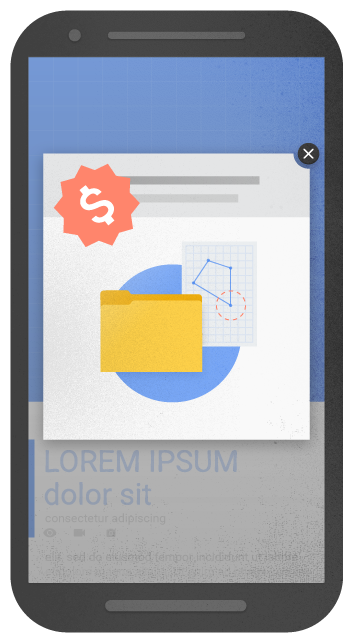
في ما يلي مثال على إعلان بيني مستقل دخيل:
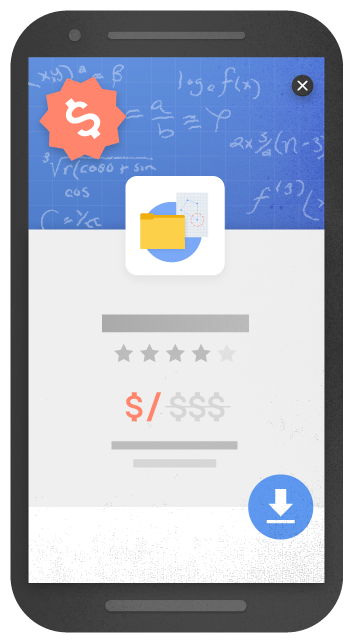
في ما يلي مثال آخر على إعلان بيني مستقل دخيل:
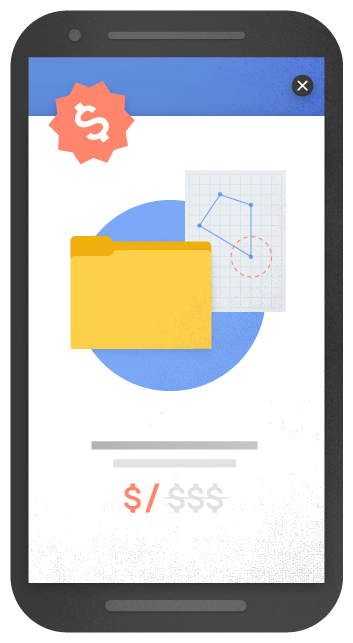
وفي المقابل، إليك بعض الأمثلة على الأساليب التي لن تتأثر بالإشارة الجديدة إذا تم استخدامها بمسؤولية:
- الإعلانات البينية التي يبدو أنها استجابة لالتزام قانوني، مثل استخدام ملفات تعريف الارتباط أو التحقق من العمر.
- مربّعات حوار خاصة بتسجيل الدخول في المواقع الإلكترونية التي لا يمكن فهرسة المحتوى فيها بشكل علني. على سبيل المثال، قد يتضمن ذلك المحتوى الخاص، مثل الرسائل الإلكترونية أو المحتوى غير القابل للفهرسة المحمي بنظام حظر الاشتراك غير المدفوع.
- إعلانات البانر التي تستخدم قدرًا معقولاً من مساحة الشاشة ويمكن إغلاقها بسهولة. على سبيل المثال، إن إعلانات البانر لتثبيت التطبيقات التي يوفّرها Safari وChrome هي أمثلة على إعلانات البانر التي تستخدم قدرًا معقولاً من مساحة الشاشة.
أمثلة على الإعلانات البينية التي لن تتأثر بالإشارة الجديدة، إذا تم استخدامها بمسؤولية
في ما يلي مثال على إعلان بيني لاستخدام ملفات تعريف الارتباط:
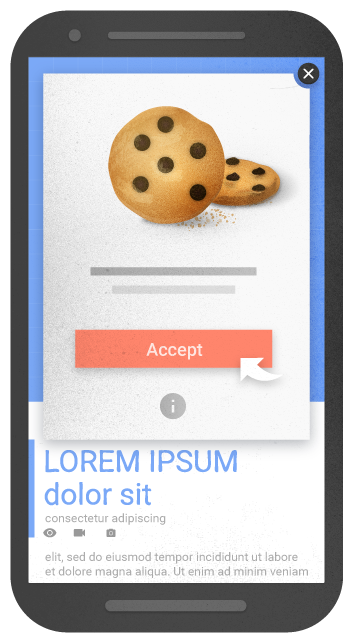
في ما يلي مثال على إعلان بيني للتحقق من العمر:
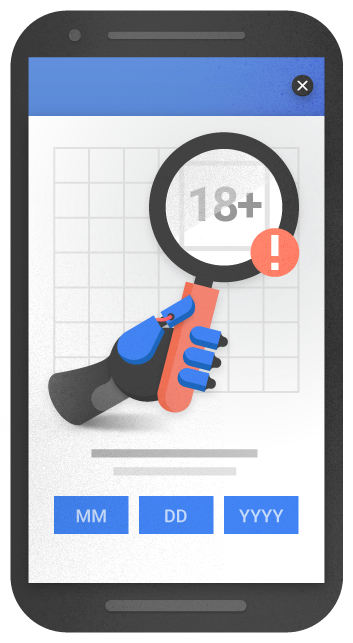
في ما يلي مثال على إعلان بانر يستخدم قدرًا معقولاً من مساحة الشاشة:
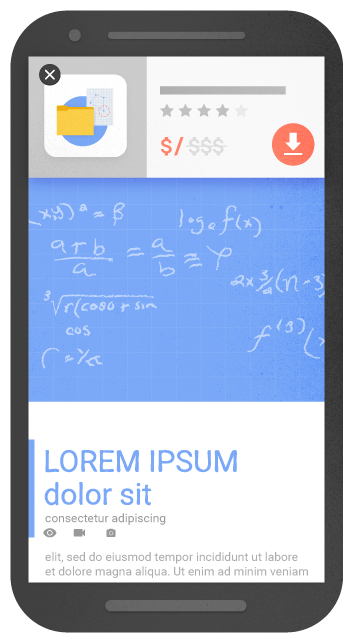
لقد اكتشفنا سابقًا إشارة تتحقق من الإعلانات البينية التي تطلب من المستخدم تثبيت تطبيق للأجهزة الجوّالة. ومع استمرار جهودنا في التطوير، أدركنا الحاجة إلى توسيع نطاق تركيزنا ليشمل الإعلانات البينية بشكلٍ عام. بناءً على ذلك، ولتجنّب التكرار في إشاراتنا، أزلنا عملية التحقق من الإعلانات البينية الخاصة بتثبيت التطبيقات من فحص التوافق مع الأجهزة الجوّالة ودمجناها في هذه الإشارة الجديدة في "بحث Google".
تذكّر أن هذه الإشارة الجديدة هي واحدة من مئات الإشارات المستخدمة في الترتيب. لا يزال القصد من طلب البحث يمثل إشارة قوية جدًا، لذلك يبقى من الممكن أن تحتل الصفحة ترتيبًا عاليًا إذا كانت تتضمن محتوًى رائعًا وذا صلة. وكالعادة، يُرجى الانتقال إلى منتديات مشرفي المواقع إذا كانت لديك أيّ أسئلة أو ملاحظات وآراء.
